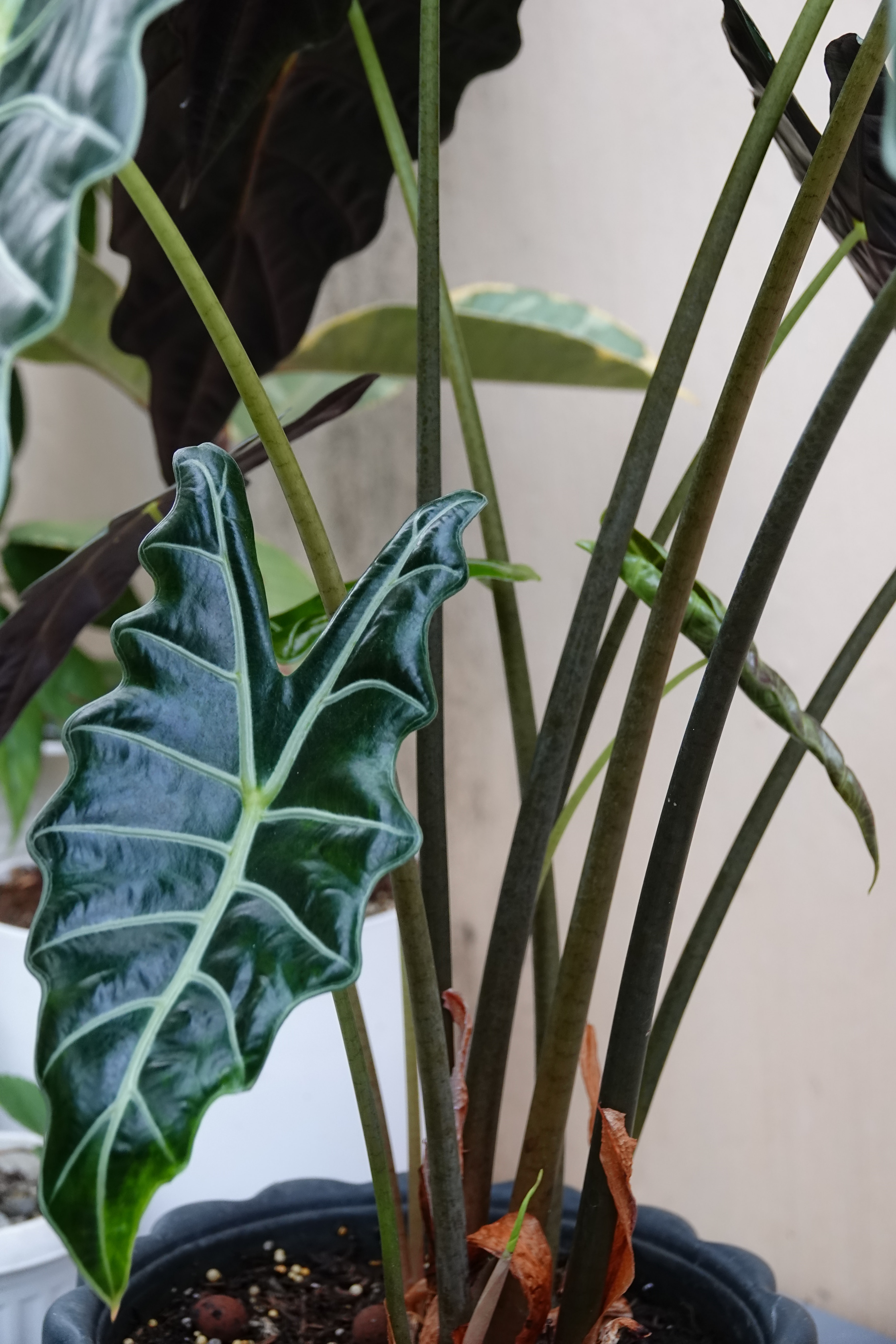Origin
The Amazonian Elephant's Ear, or Alocasia × amazonica, is a beautiful houseplant characterized by its green-and-white veined leaves with gently serrated edges, and is often displayed decoratively for its eye-catching foliage.
Elephant's Ear plants were introduced to South Africa by Portuguese traders in the 1500s, and have since spread to worldwide popularity. The plant first became a fashionable houseplant choice in the Victorian era. Despite its name, this specific variety of Elephant Ear actually doesn't come from any sort of rainforest - the hybrid was actually created in Florida during the 1950s.
They can grow quite quickly up to a height of 2 ft (60cm) and up to equally as wide - the 'Elephant's Ear' name is said to come from the impressive size that this plant's leaves can grow.

Care
These plants can sometimes be a little bit finicky - they want warm, humid conditions and can get a bit grumpy if they don't get what they want!
They do great in greenhouses due to these requirements, but if your home is kept hot and humid too then you should be just fine. You may want to invest in a humidifier to keep it happy. If you want to keep yours outdoors though, make sure to bring it inside well before it starts to get colder - Amazonian Elephant's Ear does not like the cold at all.
They're quite resistant to disease, however, if you let yours dry out too much then they can be prone to developing spider mite infestations. Misting regularly can help prevent this from happening.
On the other hand though, you don't want to let your plant become too wet - make sure you pot has drainage holes to let any excess water drain out, as too much water can quickly lead to root rot, which is often fatal.

Other
This plant has traditionally been used medicinally. For example, the leaves are thought to help fight off infection if applied to sores and can help counteract the swelling caused by insect stings / bites. Parts of the plant additionally have culinary uses. However, we wouldn't recommend using Amazonian Elephant's Ear for anything other than as a houseplant, as they are actually toxic. Consuming any part of the plant in its raw form can cause severe reactions, and in large quantities can be dangerous. Therefore, make sure to keep them out of reach of pets and children.
Although they are typically known for their rich green leaves with warm white veins / margins, other varieties of the plant can come in shades of purple-green, brown, black or even gold!
In the wild, Amazonian Elephant's Ear can produce flowers or sometimes even fruits. However, it's very unlikely to do this when kept indoors as a houseplant.
How to propagate your Amazonian Elephant's Ear
Propagation of Amazonian Elephant's Ear is a little different to other plants - you can't propagate them using a cutting.
However, these plants are rhizatomous, and you can make use of this in propagation! Rhizomes, or rootstalks, are essentially stems of the plant that grow horizontally under the soil and shoot out new roots. When repotting your plant, you should easily be able to identify the rhizomes: they can look a bit like little potatoes! Other examples of rhizomes include turmeric and ginger (although make sure you don't try to eat your Amazonian Elephant Ear's rhizomes!)
To propagate yours, just carefully divide the tubers and then replant them each in a new pot. Make sure to use a mature, healthy parent plant, and preferably do this during fall.